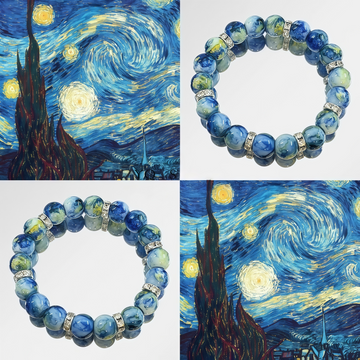Ultrasonic cleaning may cause the following hazards to stone bracelets:
Damage to soft or porous stones
Organic gemstones such as pearls, corals and amber: The vibration of ultrasonic waves may cause surface scratches, structural damage or internal crack propagation.
Turquoise, opal and other porous stones: They may cause internal moisture changes due to water absorption, leading to cracking or discoloration.
The impact on the optimized treatment of stone materials
Emerald (often optimized with oil or resin) : Ultrasonic waves may wear down or remove the surface treatment layer, resulting in a decrease in transparency.
Dyed gemstones (such as dyed sapphires) : Color fading or unevenness may occur due to vibration.
Damage to the inlaying technique
Prong setting and micro setting: High-frequency vibrations may cause the prongs to loosen, leading to the gemstone falling off.
Borderless setting and dense setting: Complex setting structures are prone to damage in ultrasonic waves, and the gaps between gemstones may expand due to vibration.
The potential risks of cracked stone
Stones with natural cracks or bubbles inside: Ultrasonic waves may accelerate the crack propagation, causing the gemstone to break.
Damage to heat-sensitive stone
For temperature-sensitive stones such as Opal: Temperature changes in ultrasonic cleaning machines may cause changes in the internal structure of the stones, leading to cracking.
Suggestions for avoiding harm
First, test: Conduct a small-scale test in an inconspicuous area to observe if there is any damage.
Control parameters: Use low power for a short period of time (such as 2-3 minutes), and avoid prolonged vibration.
Select the appropriate stone: Only use high-hardness, crack-free and unoptimized stones, such as diamonds, rubies, sapphires, etc.
Consult a professional: For stone bracelets of high value or complex structure, it is recommended to entrust them to a professional jeweler for handling.
Although ultrasonic cleaning is highly efficient, it should be used with caution according to the characteristics of the stone to avoid irreversible damage.







